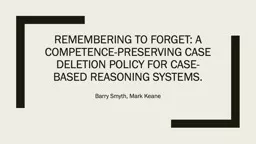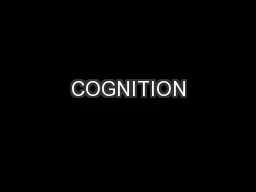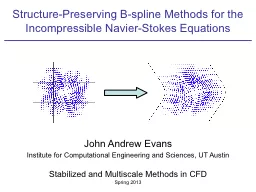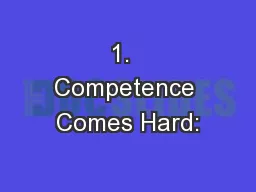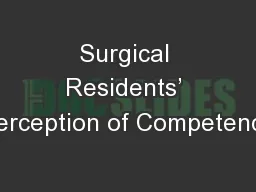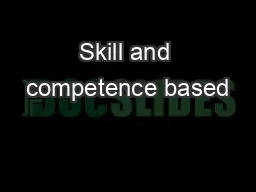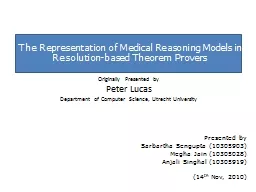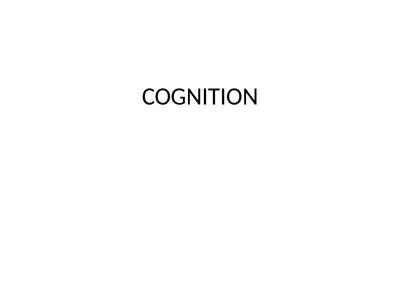PPT-Remembering to forget: a competence-preserving case deletion policy for case-based reasoning
Author : BookWorm | Published Date : 2022-08-01
Barry Smyth Mark Keane Context of the paper Utility problem When cost associated with searching for relevant knowledge outweighs the benefit of applying this knowledge
Presentation Embed Code
Download Presentation
Download Presentation The PPT/PDF document "Remembering to forget: a competence-pres..." is the property of its rightful owner. Permission is granted to download and print the materials on this website for personal, non-commercial use only, and to display it on your personal computer provided you do not modify the materials and that you retain all copyright notices contained in the materials. By downloading content from our website, you accept the terms of this agreement.
Remembering to forget: a competence-preserving case deletion policy for case-based reasoning: Transcript
Barry Smyth Mark Keane Context of the paper Utility problem When cost associated with searching for relevant knowledge outweighs the benefit of applying this knowledge Deletion strategy Ensuring that stored knowledge is genuinely useful. Initial Consonant Deletion 574115745557456574655745857449574475744857460573765751357376573945739257392574015737657411574415745857455574 Intercultural Communicative . Competence: Working With MA TESOL and TFL Students . Dr. Lynn Goldstein. Monterey Institute of International Studies,. A Graduate School of Middlebury College. CERCLL . Cognition Questions. Do you have difficulty remembering or concentrating?. Split Interviews:. How often do you have difficulty remembering important things?. . Thinking about the last time you had difficulty remembering important things, how much difficulty did you have?. spline. Methods for the Incompressible . Navier. -Stokes Equations. John Andrew Evans. Institute for Computational Engineering and Sciences, UT Austin. Stabilized and . Multiscale. . Methods in CFD. The Ethics of Clinical Decision-making. Francis A. Martin, Ph.D.. 1. 2. Competence Comes Hard . When did you last practice one of these therapies:. After Death Communications. Time Travel. Vibrator Therapy. &. Relevance of the Clinical Curriculum to Future Practice. Jonathan Fryer, MD, Jeff . Fronza. , MD, . Jeff Wayne, MD, . Debra DaRosa, PhD, and Jay Prystowsky, MD, MHPE. Northwestern University Feinberg School of Medicine. search in OpenScout. Dr.. Wolfgang . Greller. ,. Centre for Learning Sciences and Technologies (CELSTEC), Open University of the Netherlands. Online Webinar, 14/05/2012. Skills and competences. In the context of EQF, skills are described as . 2016. If the slideshow does not automatically start, press . F5. P. urpose. The purpose of this training is to enhance the social, cultural and linguistic competence of Panhandle Health District employees in providing services to populations with higher health risks and poorer health outcomes. . ST. . CENTURY. Making Sure The Christian Faith Lasts And Maintaining It In The 21. st. Century. 2 . Peter 1: 5- 11. Bro. Josiah G. . Emonena. Preserving Our Christian Faith In The 21st Century. INTRODUCTION. @Vise Business Consultancy. Author: Hans . Groen. Sources. This generic competence framework distills findings from: MOSAIC competencies for professional and administrative occupations(U.S. Office of Personnel Management); Spencer and Spencer, Competence at Work; and top performance and leadership competence studies published in Richard H. Rosier (ed.), The Competency Model Handbook, Volumes One and Two(Boston : Linkage, 1994 and 1995), especially those from Cigna, Sprint, American Express, Sandoz Pharmaceuticals; Wisconsin Power and Light; and Blue Cross and Blue Shield of Maryland. Much of the material that follows comes from Working with Emotional . Edward . P. Richards, JD, . MPH. Director. , Program in Law, Science, and Public . Health. LSU . Law . School. richards@lsu.edu. http. ://. biotech.law.lsu.edu. http. ://. ssrn.com/author=222637. Rule of Law. - Charles Sanders Peirce. On the Radar. Researching the Persuasive Speech Assignment. Due Wednesday on . WebCT. (by 11:59 p.m.). Exam Two. This Friday in Lecture. Study Guide on Course Website. Workshops for the Persuasive Speech. Provers. Originally Presented by. Peter Lucas. Department of Computer Science, Utrecht University. Presented . by. Sarbartha. . Sengupta. (10305903). Megha. Jain (10305028. ). Anjali . Singhal. (10305919). Do you have difficulty remembering or concentrating?. Split Interviews:. How often do you have difficulty remembering important things?. . Thinking about the last time you had difficulty remembering important things, how much difficulty did you have?.
Download Document
Here is the link to download the presentation.
"Remembering to forget: a competence-preserving case deletion policy for case-based reasoning"The content belongs to its owner. You may download and print it for personal use, without modification, and keep all copyright notices. By downloading, you agree to these terms.
Related Documents

